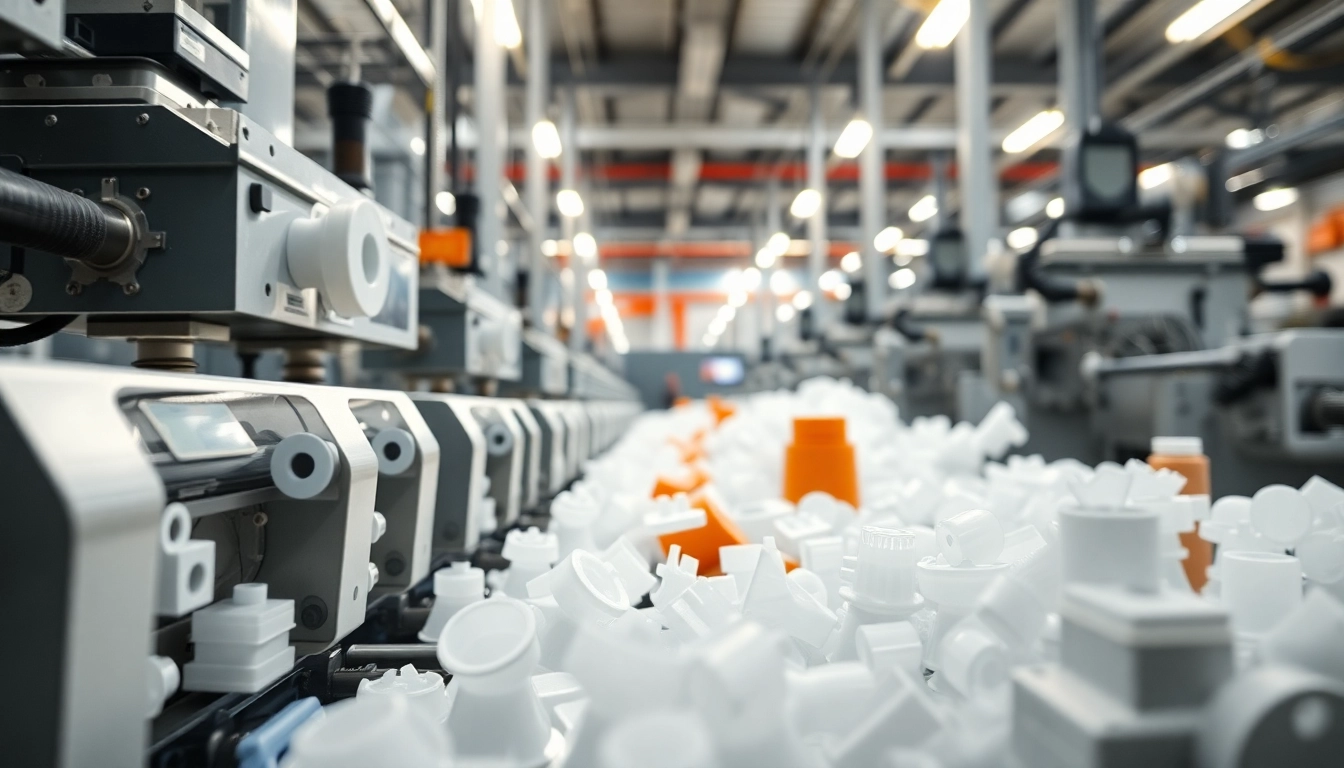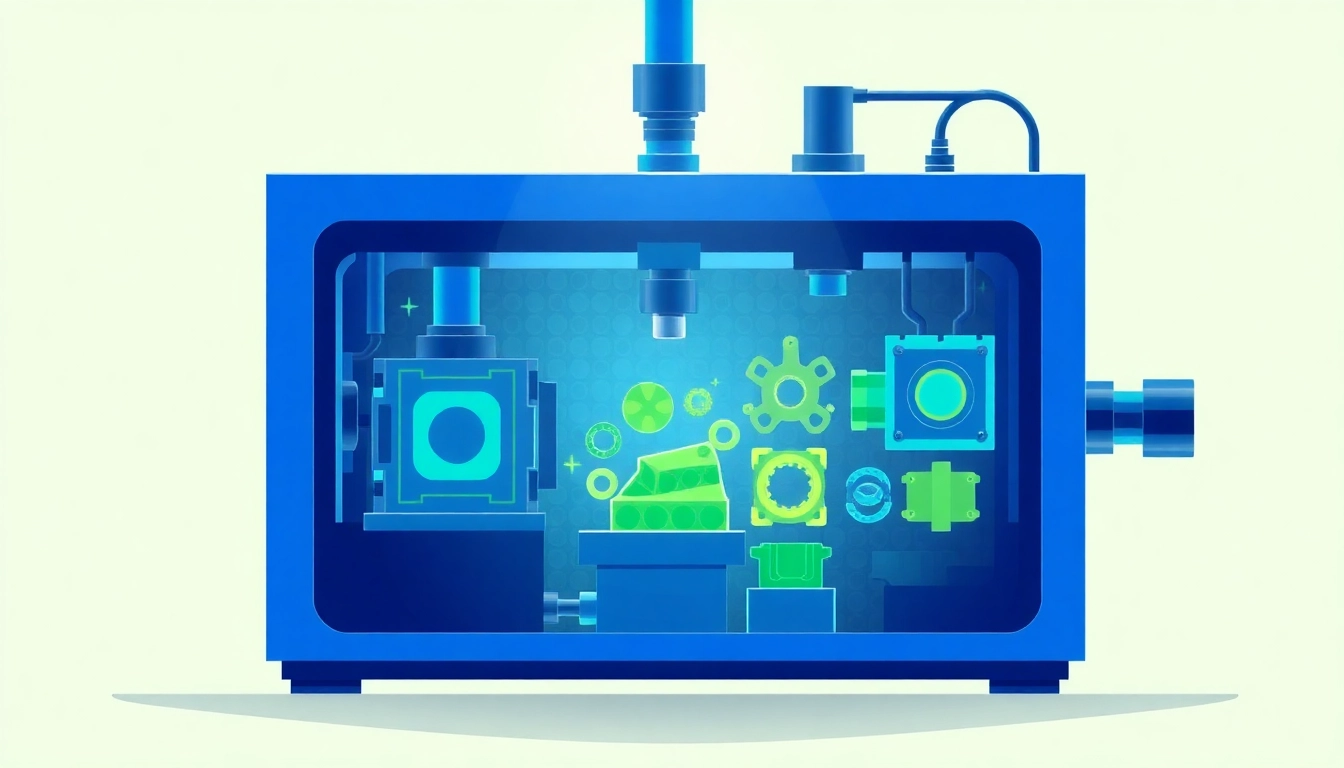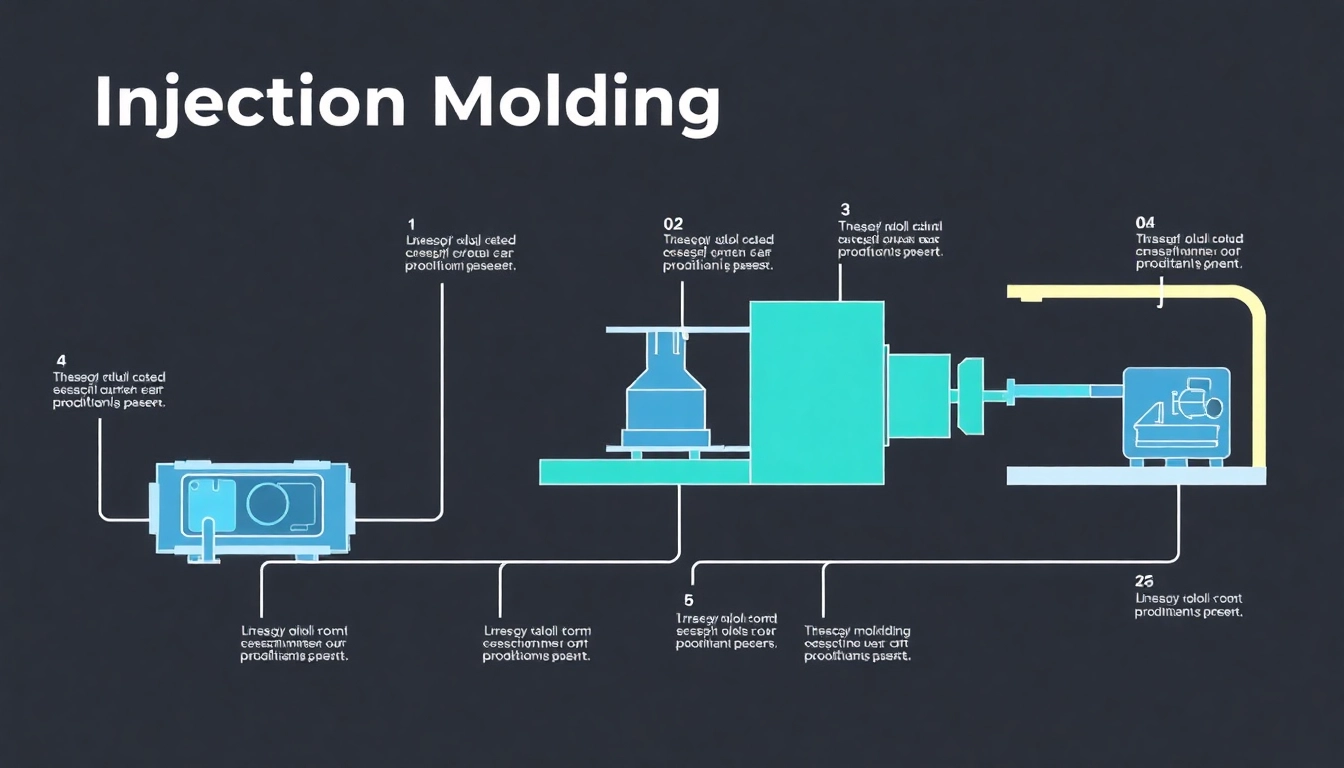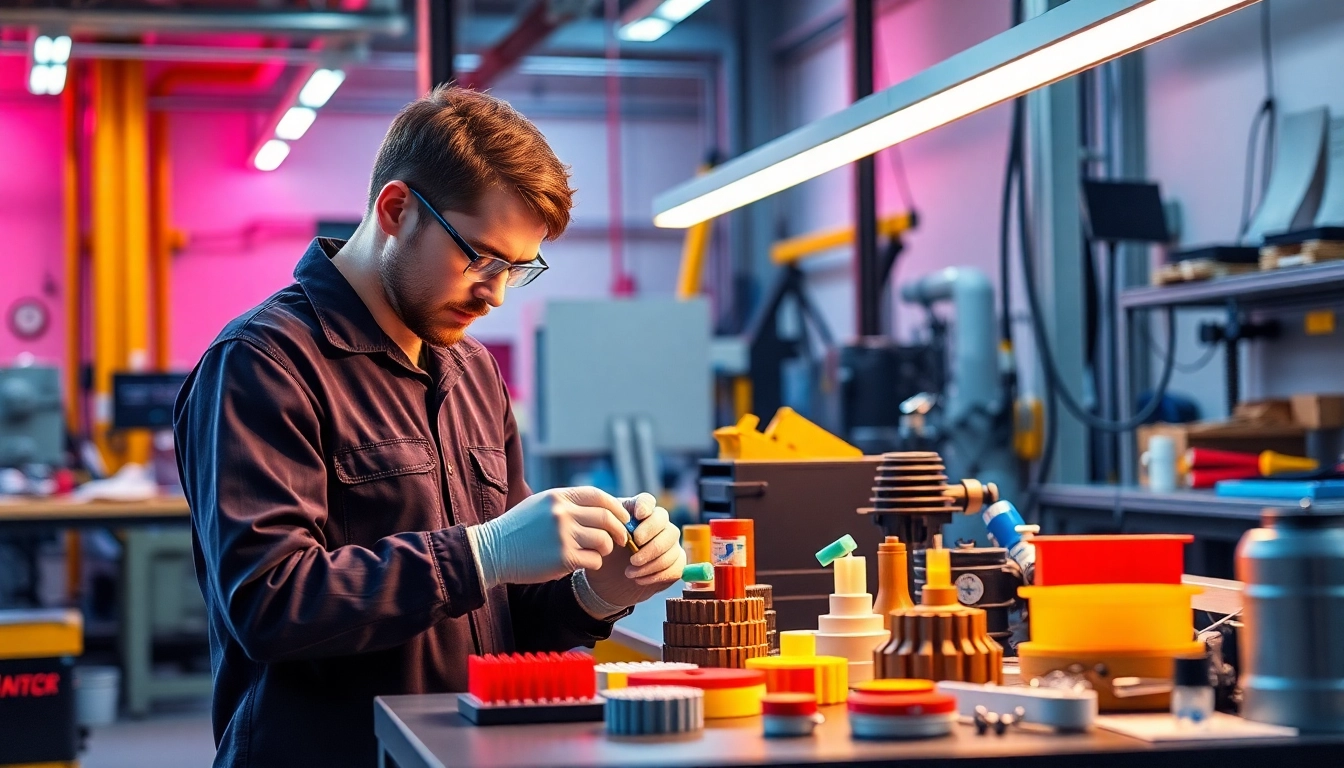Understanding Blow Moulding and Its Applications
Blow moulding is a sophisticated manufacturing process that shapes hollow plastic parts, which are widely used in various industries. This process is not only limited to plastics; it can also be used for forming hollow glass shapes. Interestingly, blow moulding has evolved over the years, enabling manufacturers to create complex shapes and structures efficiently. Among the critical components of this manufacturing method are blow moulded plastic parts, which are integral to everyday products ranging from containers and bottles to automotive components. Understanding the fundamentals of blow moulding and its applications can greatly influence product development and quality assurance strategies.
What Are Blow Moulded Plastic Parts?
Blow moulded plastic parts are hollow structures created through a process that involves inflating a molten thermoplastic material to fit a particular mould shape. This technique can produce a variety of products, such as bottles, bins, and tanks. It is a highly efficient method due to its capability to manufacture numerous items in a short time frame, making it cost-effective for large-scale production.
The process often utilizes specific types of plastics, including polyethylene (PE), polypropylene (PP), and polyvinyl chloride (PVC), selected for their unique properties such as durability and chemical resistance. The end products are typically lightweight, strong, and have a smooth finish, catering to diverse consumer needs.
Key Benefits of Using Blow Moulding
The blow moulding process offers several advantages that contribute to its wide usage in the manufacturing sector:
- Cost-Effective Production: With the ability to produce large volumes of items in a short time, blow moulding significantly reduces manufacturing costs.
- Versatility: This process can accommodate various plastic materials to produce items of differing shapes and sizes.
- Quality Consistency: Blow moulding allows for high precision molding, which results in consistent product quality and reduced scrap rates.
- Portability and Strength: The lightweight nature of blow moulded parts makes them ideal for industries where weight is a critical factor, such as automotive and aerospace.
Industries That Utilize Blow Moulded Parts
Blow moulded plastic parts find applications across a multitude of sectors, underscoring their versatility. Here are some key industries utilizing this manufacturing process:
- Consumer Goods: Predominantly seen in bottle production for beverages, cleaning agents, and personal care products.
- Aerospace and Automotive: Utilization in fuel tanks, air ducts, and other components due to their lightweight yet durable nature.
- Medical: Used to manufacture sterile plastic containers and devices, ensuring high hygienic standards.
- Construction: Production of bins, large tanks, and various construction materials that require lightweight and durable components.
The Blow Moulding Process
Step-by-Step Breakdown of Blow Moulding
The blow moulding process can be broken down into several key steps:
- Preform Creation: A plastic resin is heated and formed into a parison, a tube-like structure that resembles the final product.
- Mould Insertion: The parison is then placed in a custom-designed mould.
- Blowing the Plastic: Compressed air is introduced into the parison, causing it to expand and fill the cavity of the mould.
- Cooling and Solidification: Once the air is injected, the plastic cools and hardens into its final shape.
- Demoulding: Finally, the mould is opened, and the finished product is removed.
Materials Commonly Used in Blow Moulding
Different types of plastics have unique characteristics that make them suitable for blow moulding. The most commonly used materials include:
- Polyethylene (PE): Available in high-density (HDPE) and low-density (LDPE) forms, it is widely used due to its flexibility and resistance to impact and chemicals.
- Polypropylene (PP): Known for its rigidity and high melting point, it’s ideal for applications requiring durability.
- Polyethylene Terephthalate (PET): Commonly used in the beverage industry for producing bottles due to its strength and recyclability.
- Polyvinyl Chloride (PVC): Favored for its high durability and resistance to corrosion, often used in plumbing and construction.
Innovations in Blow Moulding Technology
The blow moulding industry is continually evolving, with technological advancements leading to enhanced efficiency and sustainability. Notable innovations include:
- Automation: Advanced robotics and automated systems streamline production, minimize labor costs, and improve precision.
- Integration of IoT: Smart manufacturing solutions utilize data analytics for real-time monitoring and predictive maintenance of blow moulding machines.
- Material Improvement: The development of biodegradable and recycled materials offers environmentally friendly alternatives to traditional plastics.
Choosing the Right Supplier for Blow Moulded Parts
Factors to Consider When Selecting a Manufacturer
Choosing the right supplier for blow moulded plastic parts is crucial for ensuring quality and efficiency. Consider the following factors:
- Experience and Expertise: Evaluate the supplier’s industry experience and their technical expertise in handling specific requirements.
- Production Capabilities: Assess if the supplier has the necessary equipment and technology to meet your production volume and quality standards.
- Customization Options: Determine if they can provide customized solutions to meet your unique design and application needs.
Evaluating Quality Standards and Certifications
Quality assurance is paramount in manufacturing. When assessing potential suppliers, check for industry-specific certifications and quality assurance processes, such as:
- ISO 9001: This certification indicates a commitment to quality management systems.
- FDA Approval: Particularly important for suppliers involved in food and medical products, ensuring compliance with health standards.
- Environmental Certifications: Look for suppliers implementing sustainable practices, indicated through certifications like ISO 14001.
Cost Considerations in Manufacturing
Understanding the complete cost structure of manufacturing blow moulded parts is essential before selecting a supplier. Consider these cost factors:
- Material Costs: Evaluate the cost of raw materials as it constitutes a significant portion of the overall expenditure.
- Production Efficiency: Choose suppliers with efficient processes that can reduce time and resource waste.
- Transport and Logistics: Factor in shipping costs to ensure that the overall quote from the supplier includes delivery considerations.
Best Practices for Designing Blow Moulded Parts
Designing for Performance and Functionality
Effective design is critical for the performance of blow moulded parts. Utilize these best practices:
- Streamlined Designs: Avoid sharp corners and intricate details which can complicate moulding and increase production costs.
- Material Selection: Choose materials that not only fit the design requirements but also enhance the product’s performance.
- Weight Optimization: Design parts to be as lightweight as possible without compromising strength or functionality.
Common Challenges in Blow Moulded Part Design
While designing blow moulded parts, manufacturers often face several challenges:
- Mould Design Complexity: A complex mould design can lead to higher costs and longer lead times.
- Quality Control: Ensuring consistent quality across all produced parts can be difficult, necessitating rigorous inspection processes.
- Material Limitations: Certain materials may not perform well under specific conditions, requiring adjustments in design or materials.
Case Studies of Successful Blow Moulded Applications
Exploring successful applications of blow moulded parts can provide valuable insights. For instance:
- Automotive Fuel Tanks: A leading automotive manufacturer implemented blow moulding technology to produce lightweight fuel tanks leading to improved fuel efficiency in their vehicles.
- Beverage Bottles: A beverage company adopted blow moulding to create customized bottles, enhancing brand recognition while maintaining cost-effectiveness.
Future Trends in Blow Moulded Plastic Parts Manufacturing
Sustainability in Blow Moulding Processes
As industries become more environmentally conscious, the blow moulding sector is likely to see a shift towards sustainable practices. This includes:
- Use of Recycled Materials: Increasingly, manufacturers are sourcing recycled plastics to reduce their carbon footprint.
- Energy-Efficient Technologies: The integration of energy-saving technologies in blow moulding machines will enhance sustainability by lowering energy consumption.
Impact of 3D Printing on Blow Moulding
3D printing technology could significantly impact blow moulding by:
- Improving Prototyping Processes: Rapid prototyping via 3D printing allows for quicker modifications to designs before full-scale production.
- Customization: 3D printing facilitates bespoke mould creation, enhancing flexibility in design and production.
Predicted Market Trends and Innovations
The blow moulding market is poised for growth, driven by innovative technologies and increasing demand for sustainable practices. Some predicted trends include:
- Shift Towards Smart Manufacturing: Increased reliance on automation and IoT for efficient production workflows.
- Growth in Bioplastics Usage: A rising trend toward the use of bioplastics as consumers seek environmentally responsible product options.
- Increased Customization: As consumer demand for personalized products grows, blow moulding manufacturers will adapt their processes to offer more customization.



